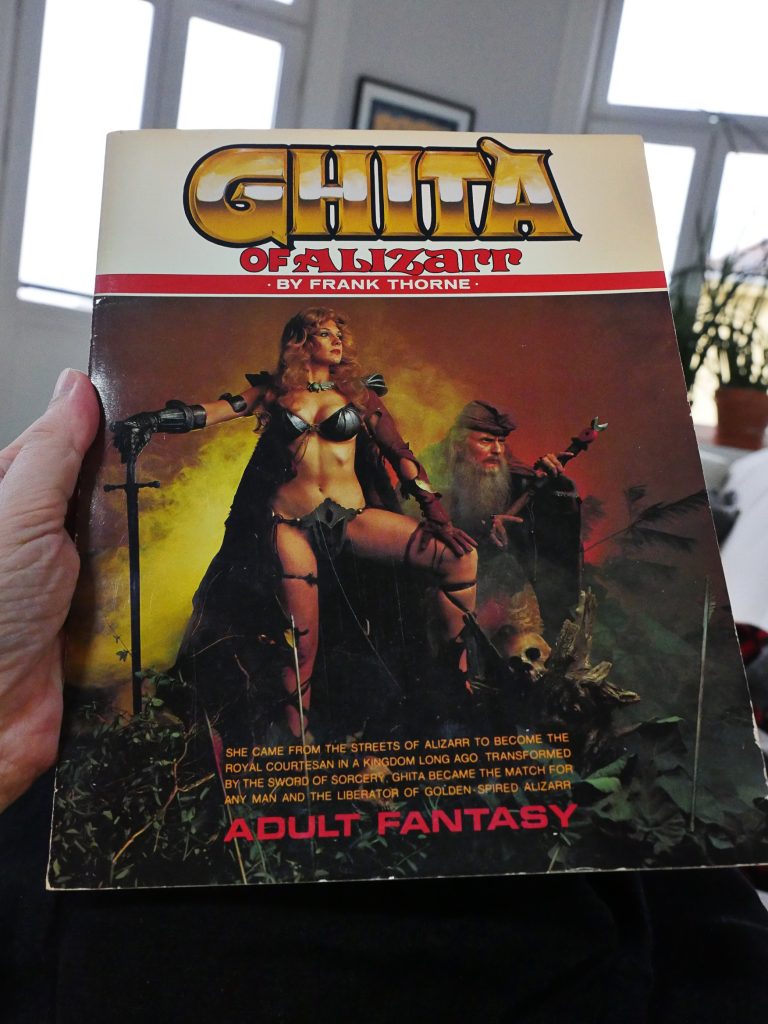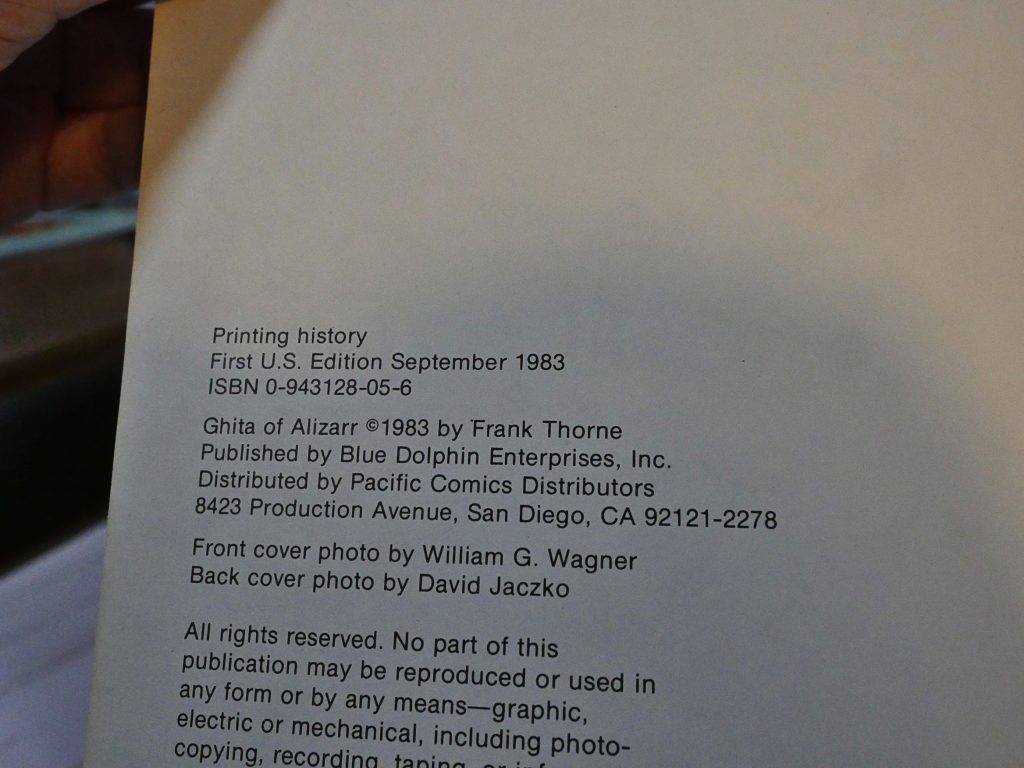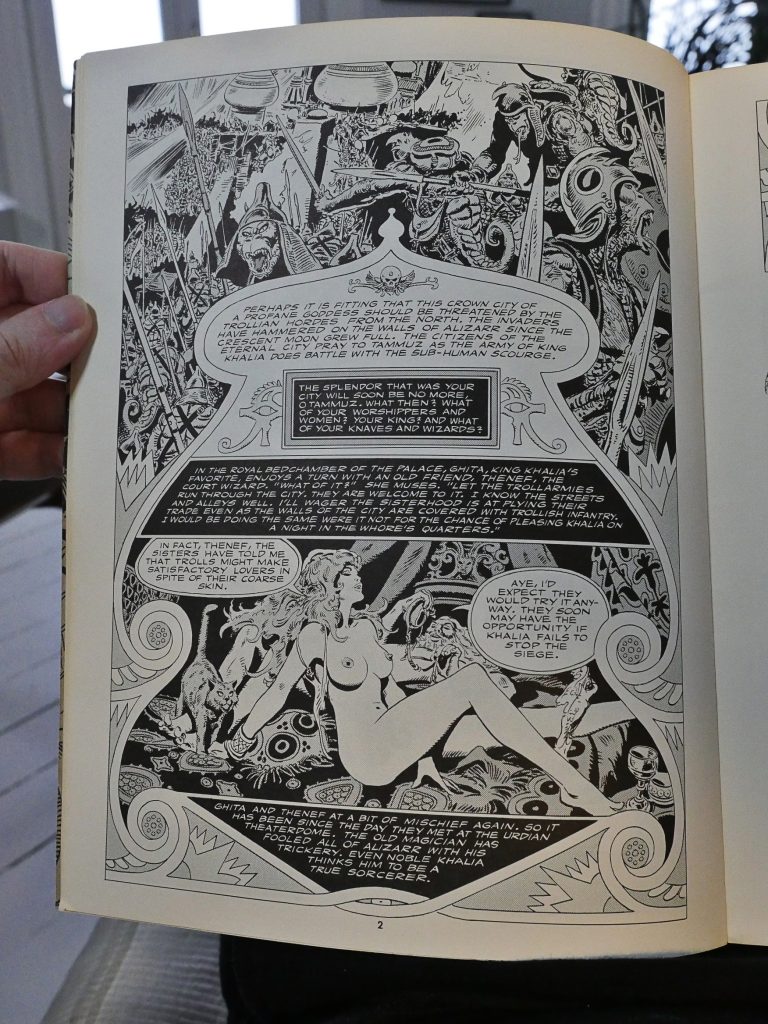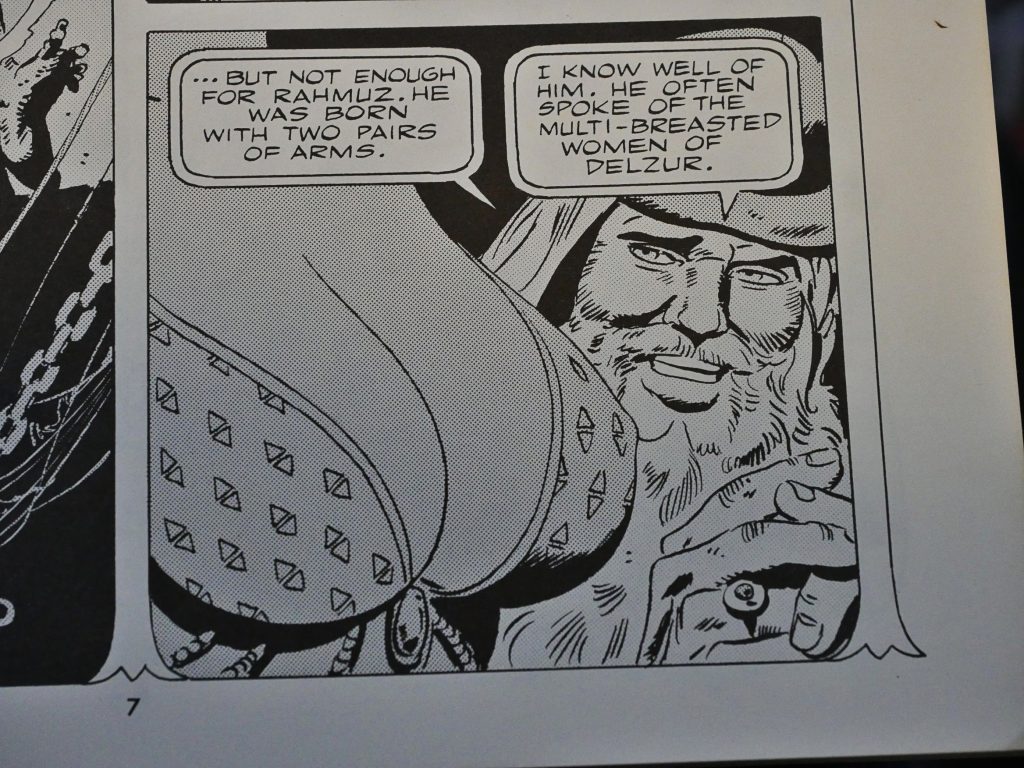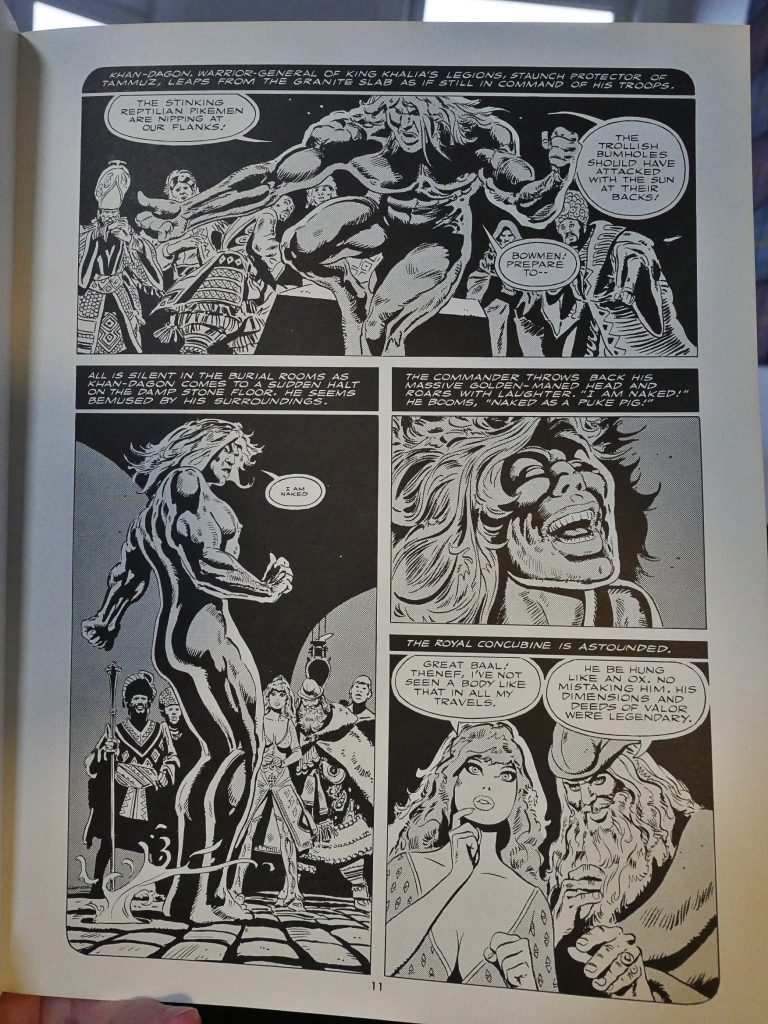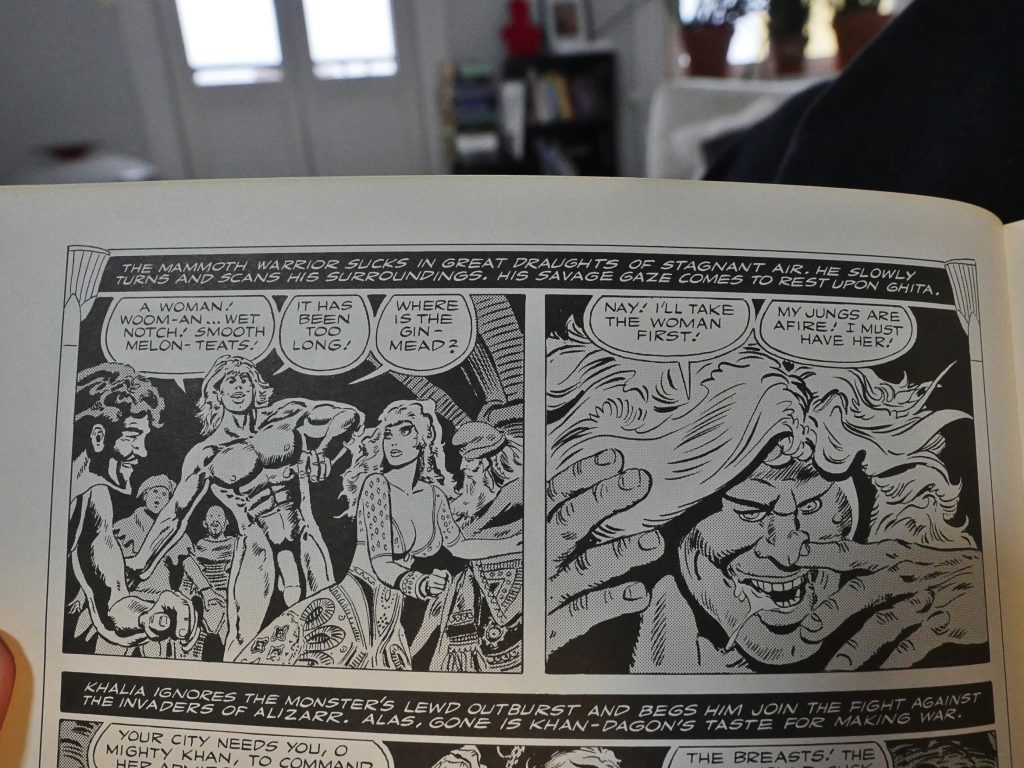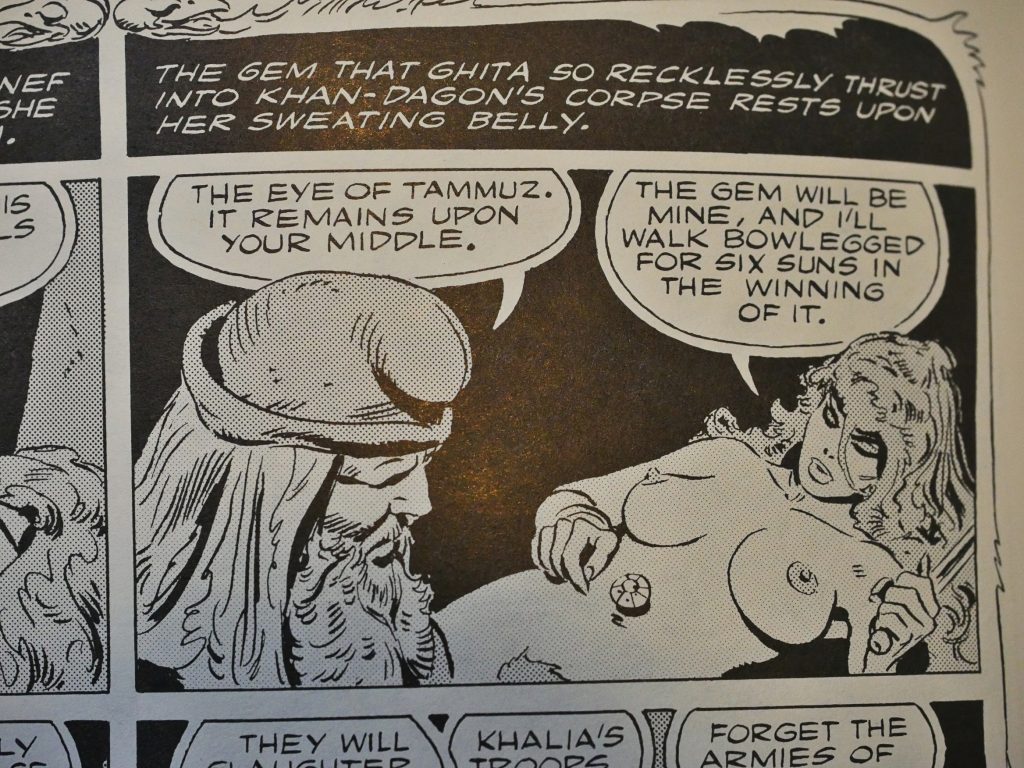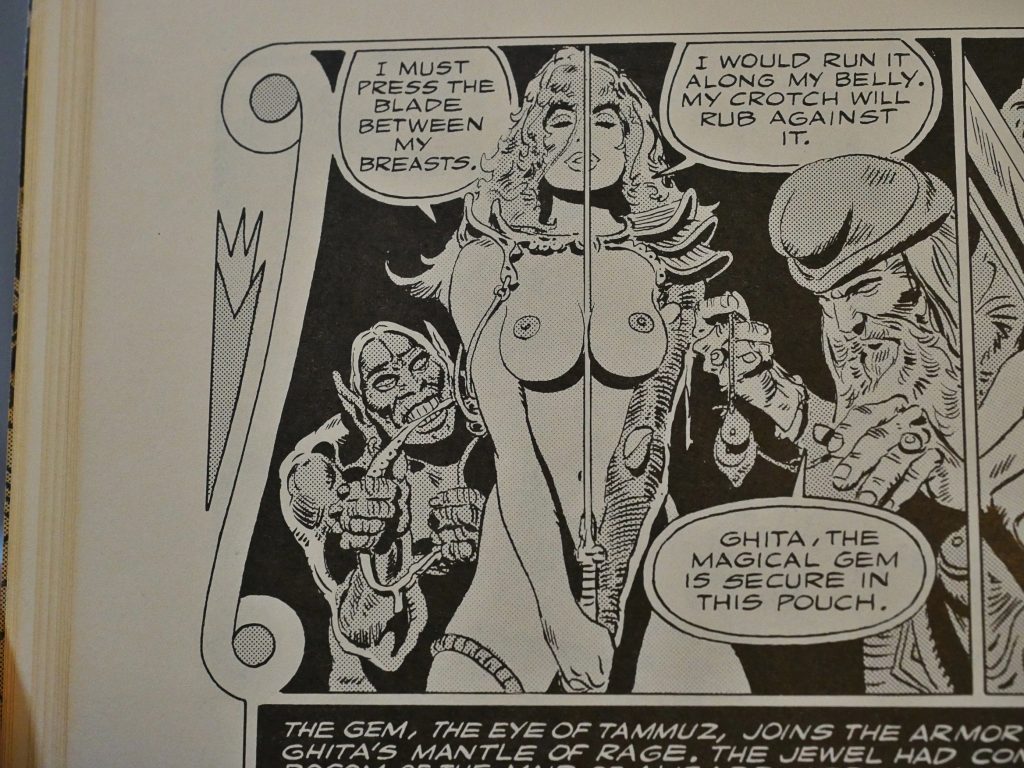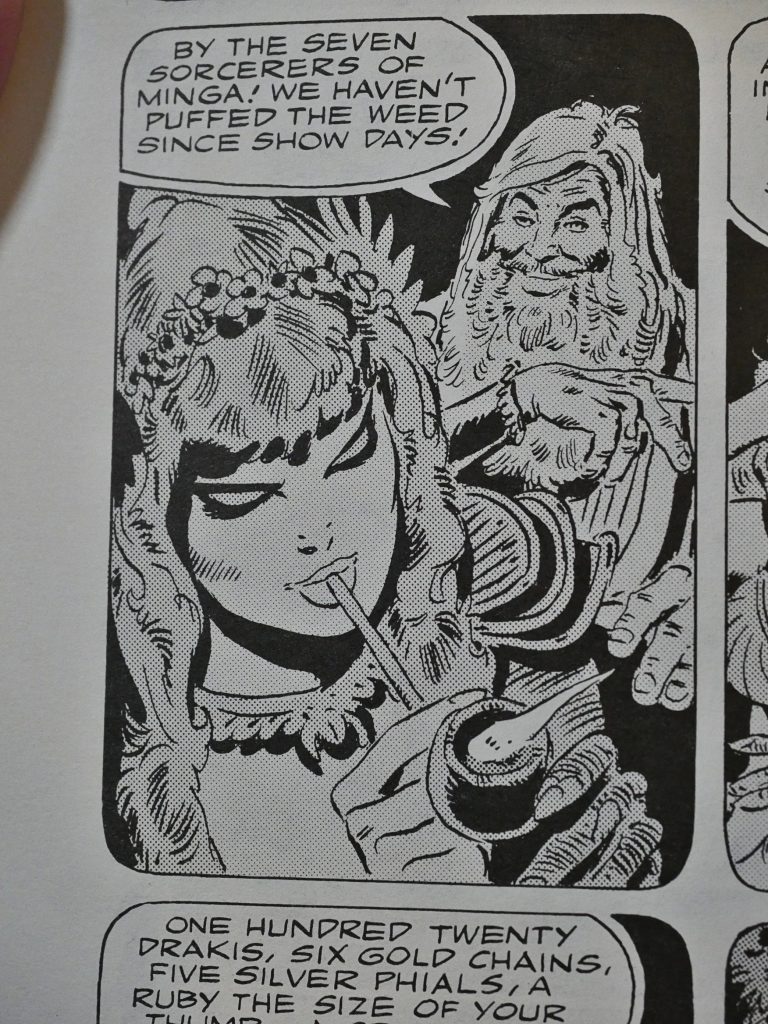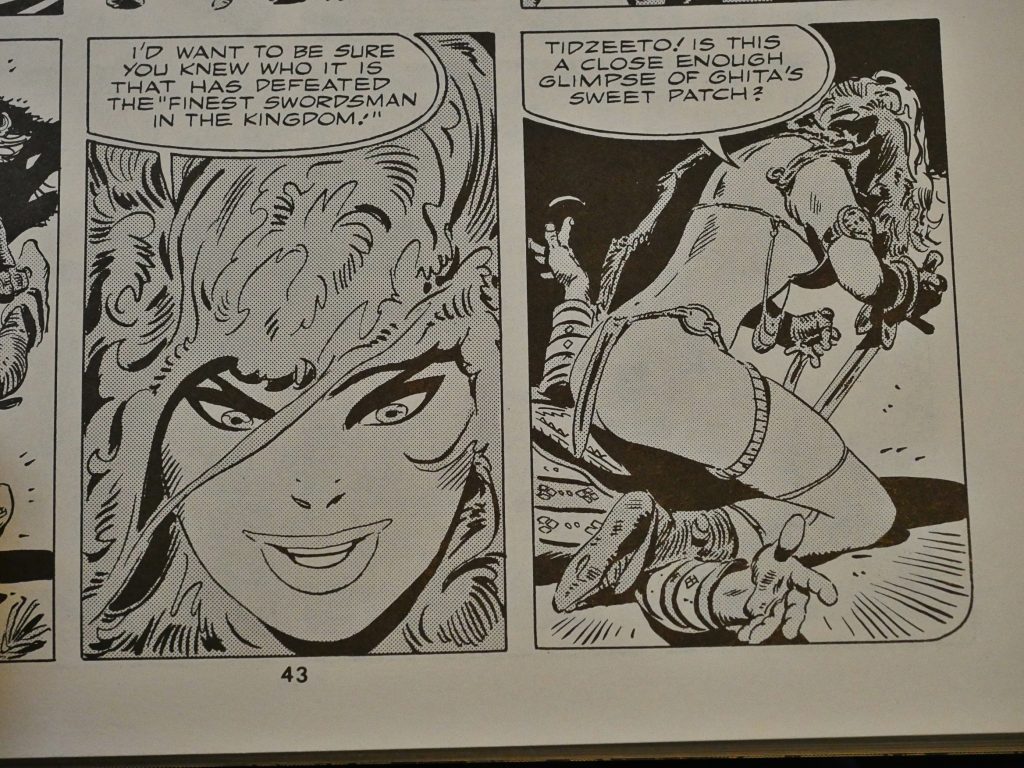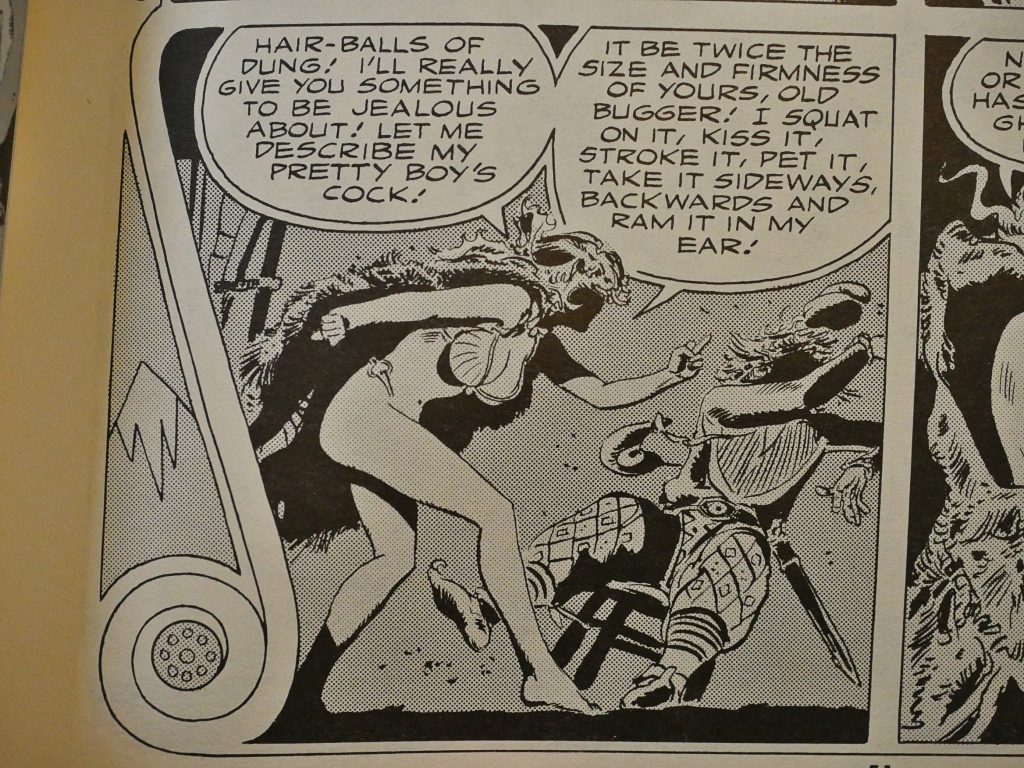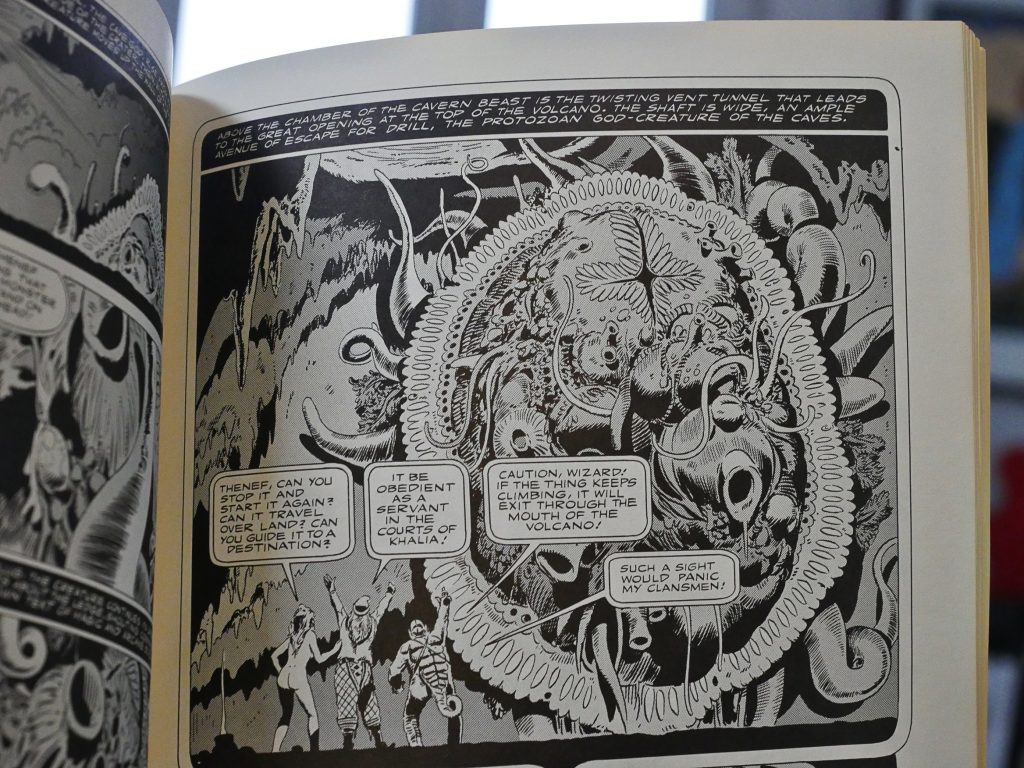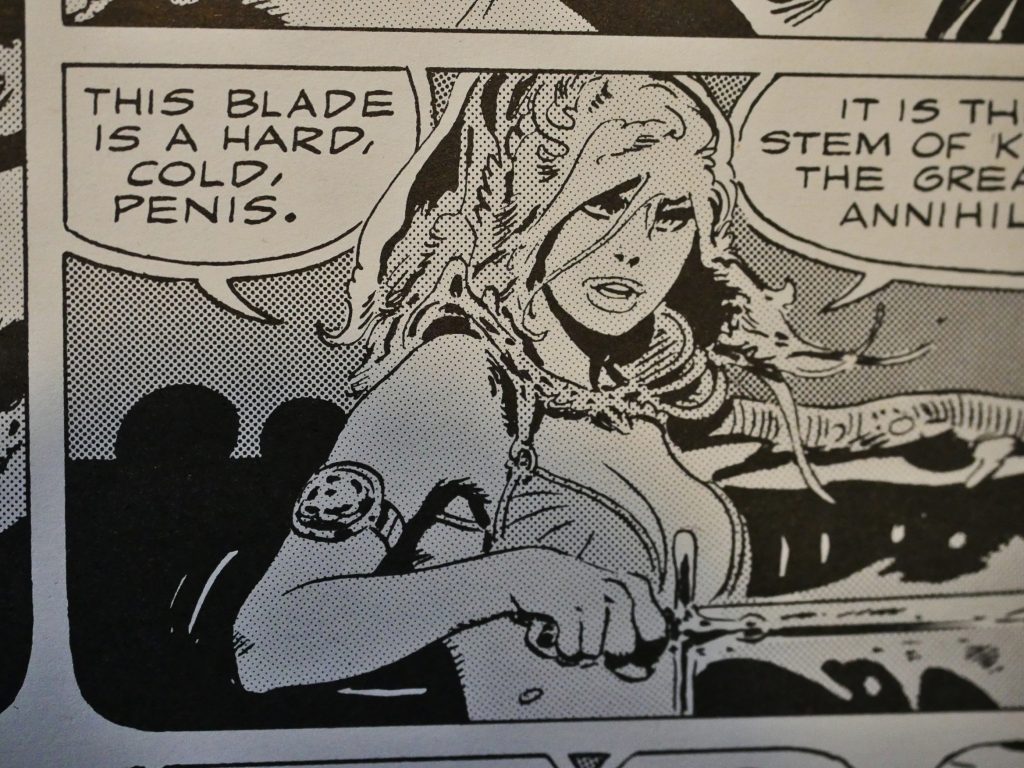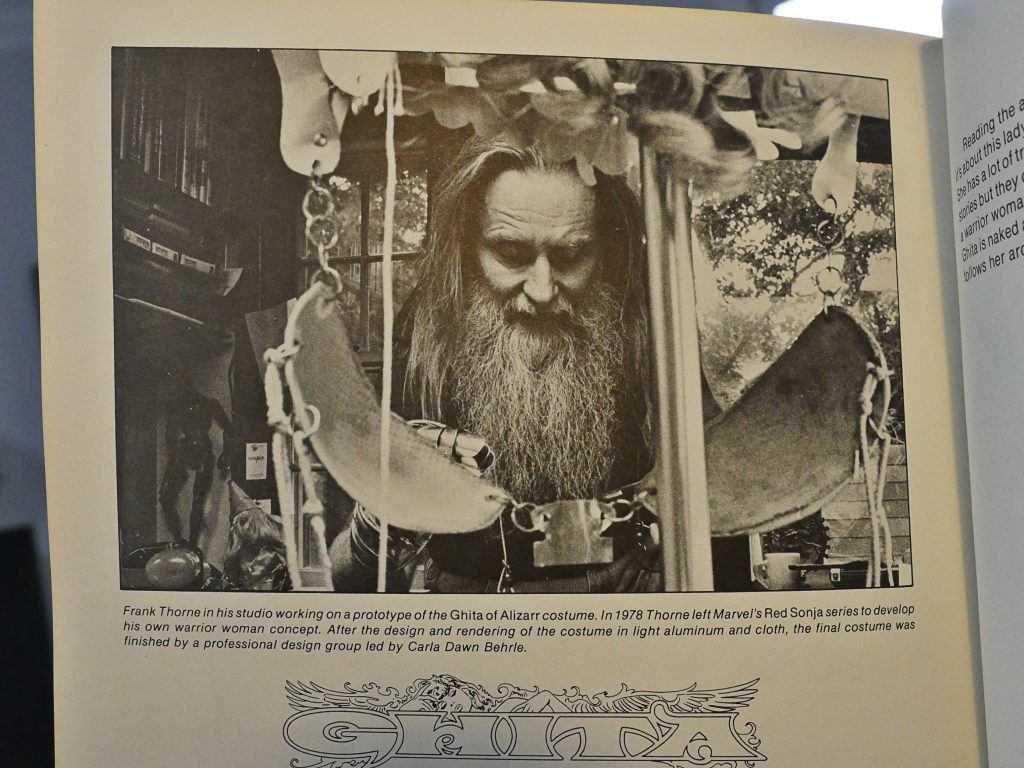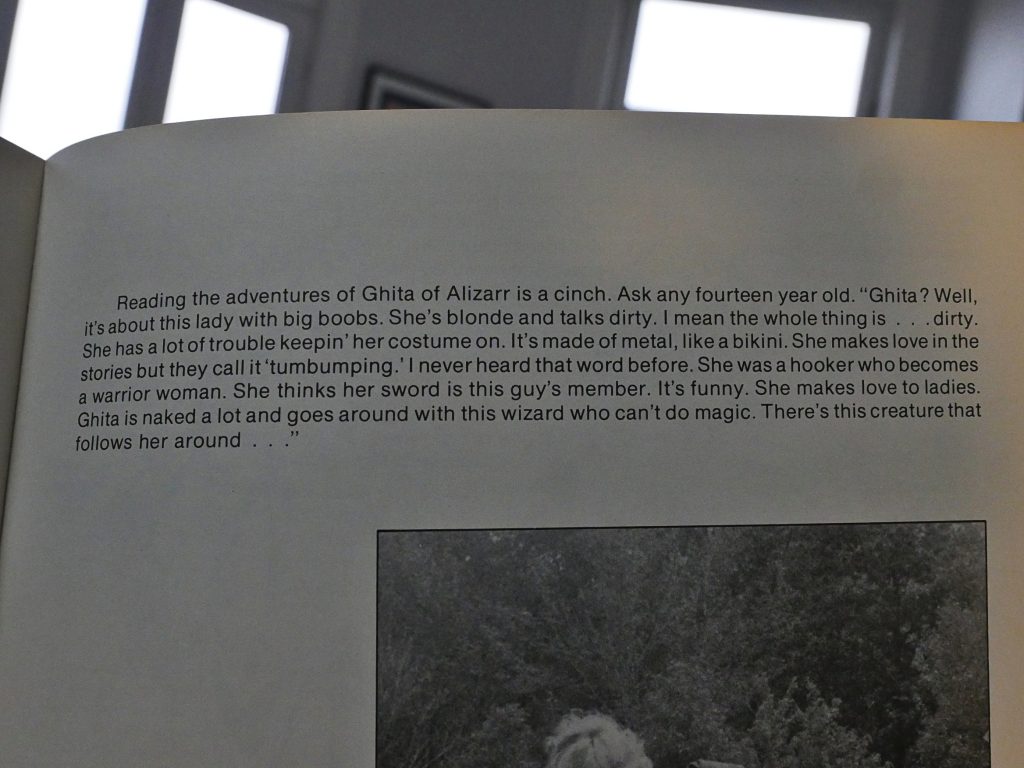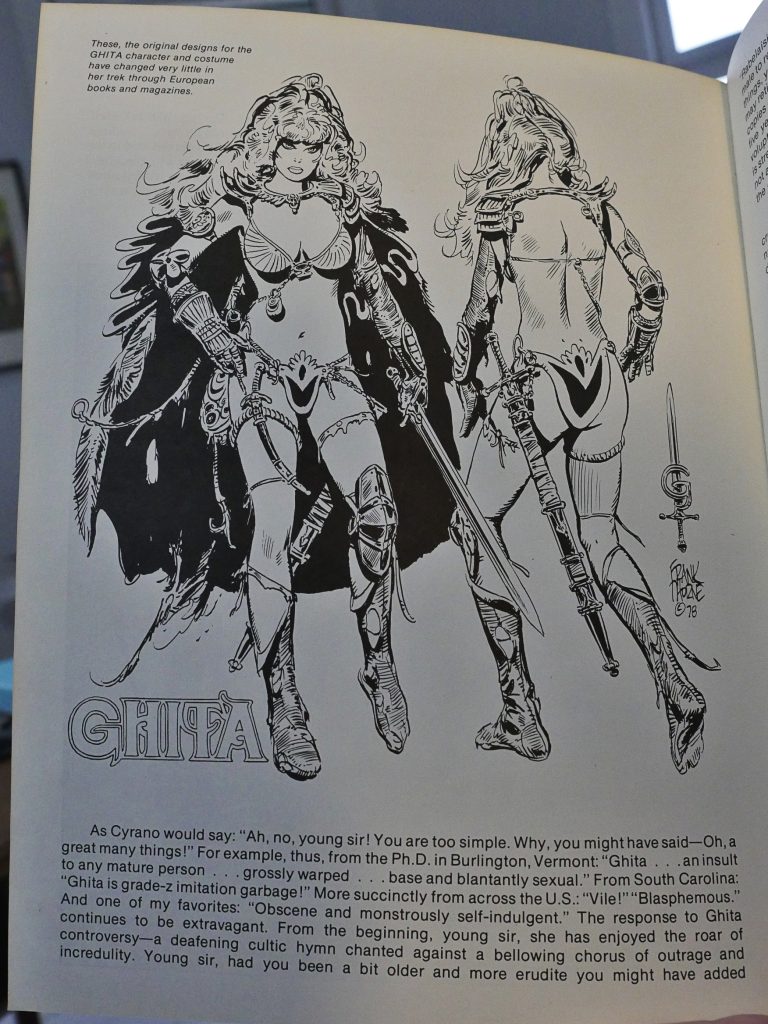Ghita of Alizarr (1983) #1
That’s Frank Thorne himself on the cover. He’s the one to the right.
Anyway, so this wasn’t published by Pacific, but by Blue Dolphin Interprises, Inc, which was also owned by the Schanes brothers and housed in the same offices as Pacific. So why they didn’t just publish this as “Pacific” is a mystery to me. Perhaps to have some plausible deniability if they got into problems after publishing it? It’s a bit on the racy side.
And oh my god it’s so verbose. Thorne doesn’t skimp on the actual drawings: In the portions of the pages where there’s no verbiage, he draws all these little details all over the place, in addition to the curlicues that edge in here and there.
This seems like a passion project for Thorne. He was known at the time for doing the artwork on the Red Sonja adaptations for… Marvel? So there wasn’t room for that much sex and violence as there was in Warren’s infamous 1984/1994 magazine, which is where these comics originally ran (even if this reprint volume doesn’t mention that at all).
I can kinda imagine Thorne having that look of deranged delight on his own face while doing these pages.
And perhaps that look, too.
And then a rape happens.
OK, I should talk a bit about the plot, perhaps: Alizarr, a city, is overrun by trolls, and Ghita (a former prostitue) and her two sidekicks, a fraudulent magicians and a half-troll, decide to take the city back. Adventure ensues.
You can’t help admire the effective skewering of fantasy sword-and-sorcery tropes, but it’s not a parody. I think. Thorne is having fun with the story, but it holds together narratively in a surprising manner.
And, of course, there’s a lot of sex.
And weed.
And inventive violence.
And humour.
And it’s horrendously over-written. Did I mention that before? The prose is turgid and tedious. For sections of the book I just skipped all the captions (that sometimes take a third of the pages) so see whether that would impact the story at all… and it doesn’t, really. The captions are superfluous to the storyline, and either describe what you’re already seeing, or is dropping some irrelevant factoid about the characters.
I was set to dislike this book, and it is not, indeed, a good one. But it’s like there’s a modestly fun book hiding in here somewhere. Thorne’s enthusiasm for the story, and his way of always making the subtext into the text makes the enthusiasm contagious.
Without Thorne’s expressive artwork there would have been no reason at all to read the book, though.
There’s a little essay written by Thorne at the end, where you get a bunch of pictures of him (dressed as the magician) and a bunch of different actresses dressed as Ghita.
He’s completely aware of how Ghita is being read…
… but he doesn’t quite agree with that assessment.
What did critics at the time think?
R C Harvey writes in The Comics Journal #91, page 36
For me, the book is a highly moral one.
In the face of Ghita’s frank and uninhib-‘
ited acceptance and enjoyment of human
sexuality. furtive guilt about such matters
scurries into the shadows and disappears.
Such openness banishes mystery with its
accompanying aura Of dirty secrecy. To
foster acceptance of any aspect Of the
human condition, to nurture enjoyment of
it, and to vanquish meaningless guilt, seem
to be to be acts of high morality: such acts
elevate the human spirit. If this be pornog-
raphy, we need more Of it.
The Ghita series continued running in 1984/1994 for a while, and these stories have been reprinted many times, in many different formats over the years, so I guess people like them? I’ve been unable to locate any modern reviews of them, so perhaps people are slightly too embarrassed to actually talk about them.


